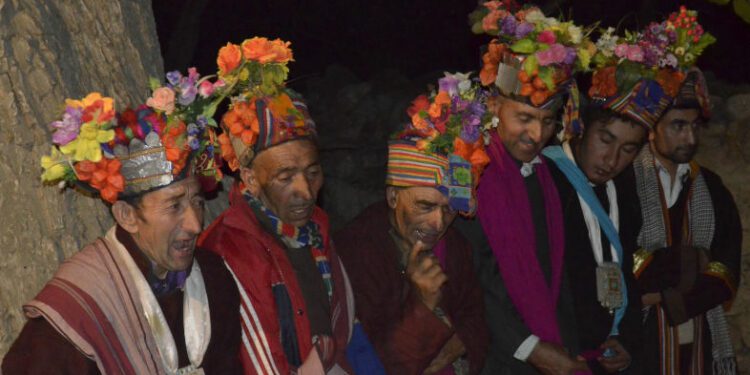The aboriginal, the outcaste, and minorities reveal a darker side to what we fondly call civilisation.
Janus, the Roman god, remembered every year in our month of January, was a two-faced deity, and his two faces gazed in opposite directions.
I can’t help thinking that most of our public events are similarly “Janus-faced,” one aspect all light and celebration, and the other murky and terrible, but alas, equally true.
Take the “discovery of the New World,” for instance.
In 1492, Columbus and a small band of Spanish soldiers and sailors, landed in an obscure bay off the coast of the Bahamas, after a 30-day voyage across the Atlantic. This “discovery” of America as we know it from our school books, was hailed as an epochal step forward in the history of civilisation.
But was it?
Two sides of the New World
As Father Jean-Bertrand Aristide, deposed president of Haiti, said a few years ago, “The discovery of America marks 500 years of resistance against a people who wanted to exploit us. When Columbus arrived in our land, we discovered a man who came to take what we had, to take our land. This date was the beginning of genocide, not the beginning of freedom.”
Indeed, the history of the Americas is also the story of slavery, the import of millions of blacks from West Africa to labor on the plantations and in the mines of north and south America.
It is also the history of the extinction of the numerous “nations” of native Americans through encroachment on their lands, pillage, war and disease.
And so, this is the other face of the “discovery,’’ the face of terror. And it is not a pleasant truth, sugar coat it though we may.
The heroes of the “discovery” myth were all explorers and conquistadores — Columbus, Magellan, Drake, Pizarro, Cortez, da Gama, and de Albuquerque. They were a brutal, ruthless and rapacious lot.
And they were all European Christians, to their shame.
Today Americans make much of their “frontier spirit” celebrated in song, cinema, and in local history. It is an ethos of rugged independence, exploration, innovation, and of aggrandisement.
But this same “frontier spirit” also reveals barbarism at its worst: the butchery of the great herds of bison on the American plains, and of the native Americans who depended on them, the treachery shown to the native tribes by the American government and its minions, the lawlessness and violence of the frontier towns, and the all-pervasive barbarity of slavery.
Barely six years after Columbus landed in America, his Portuguese contemporary, Vasco da Gama opened the sea route to India. With him came soldiers, traders, missionaries, East India companies, empires, industrialisation, and modernity.
An epochal step forward in the history of civilisation. Or was it?
Who are the barbarians?
This has often prompted me to ask: are invaders always barbarians? European invaders often considered themselves superior to the countries they invaded, though usually, all they had was more deadly weapons.
But when one looks at the artifacts and architecture of the Mayan, Inca, and Aztec civilisations, and when one studies the wealth of the Mughals in India or the prosperity and power of the Chinese and Japanese in the 15th-16th centuries, it doesn’t take long to figure who were the real barbarians!
For the barbarian brings to battle a certain puritan fierceness, and fewer encumbrances, whether physical or moral.
The ‘other face’ in India
To return to my own country: the exploitation and oppression of the indigenous people antedates the coming of the European invader. As more than one scholar has argued, the caste Hindus’ right to oppress the country’s tribal population stretches back into hoary antiquity.
In the “Ramayana,” Ravana’s sister Surpanakha challenges Rama to tell her what he was doing in her tribe’s territory, and has her nose sliced off for her insolence!
In the “Mahabharata,” Yudhisthira the “righteous,” has no qualms about inviting a family of tribal hunters (nishadas) into his forest lodge and setting it on fire, thereby killing them all. This was to deceive the rival Kauravas that all the Pandavas were dead.
In the same epic, the cunning Dronacharya has the young tribal Adivasi boy Eklavya cut off his right thumb as a guru-dakshina (preceptor’s fee), just to make sure that no one — least of all a despised tribal Adivasi — would excel Prince Arjuna in archery.
How caste Hindus look at ‘the other’
The caste Hindu continues to look upon the tribal with a mixture of contempt and resentment. They are different; therefore, they are bad. Their religious outlook and social behaviour are independent of Hinduism’s norms and strictures. Therefore, they are dirty and immoral.
For many caste Hindus, the Adivasi ghotul (mixed dormitory for adolescents) is the last word in sexual immorality. Never mind that so much of Hindu society stinks of custodial rape, dowry murders (bride burning), female infanticide (amniocentesis) and widow murders (sati).
Hindu ideologues call the Adivasi vanvasi (forest-dweller) and girijan (hill-dweller) — labels no Adivasi will accept — and surreptitiously add their numbers to the Hindu community at census time.
They hold elaborate gharwapsi (homecoming) ceremonies to emphasize their return to the true fold, as if to say an authentic member of this nation can only be a caste Hindu.
It is in this context that we should see the fissures of our precarious unity as a nation.
The demands for an independent Jharkhand state, the caste wars, the insurrections in Manipur and Nagaland, the cries for justice from the Dalits, and their brutal repression by the upper castes, are all part of that terrible face of Janus that looks away, that we have suppressed and denied for centuries, but which now demands its place in the sun.
What we owe Western civilisation is our sense of history and identity as individuals and our sense of material progress. No doubt this is important, but it is only part of ourselves.
What we have neglected is even more important: our solidarity and communion with the Other — with the poor, the sick, and the marginalised. With the foreigner, the outcaste, and the refugee. With the other sex and those incompletely sexed. With the earth and all that dwells upon it, what is loosely called nature and the environment.
As Albert Schweitzer would say, what we seem to have lost is “a sense of the sacredness of life,” something our own indigenous people would understand and approve.
To grasp this and to change accordingly would be to live differently. And in our context, as we begin the new millennium, might it not also be simply to live better?
Republished from UCA News. August 08, 2024
Source link : http://www.bing.com/news/apiclick.aspx?ref=FexRss&aid=&tid=66c0fd035e714605ba2d2d783fe161c8&url=https%3A%2F%2Fjohnmenadue.com%2Four-other-face%2F&c=3581781586787221820&mkt=en-us
Author :
Publish date : 2024-08-17 07:51:00
Copyright for syndicated content belongs to the linked Source.









